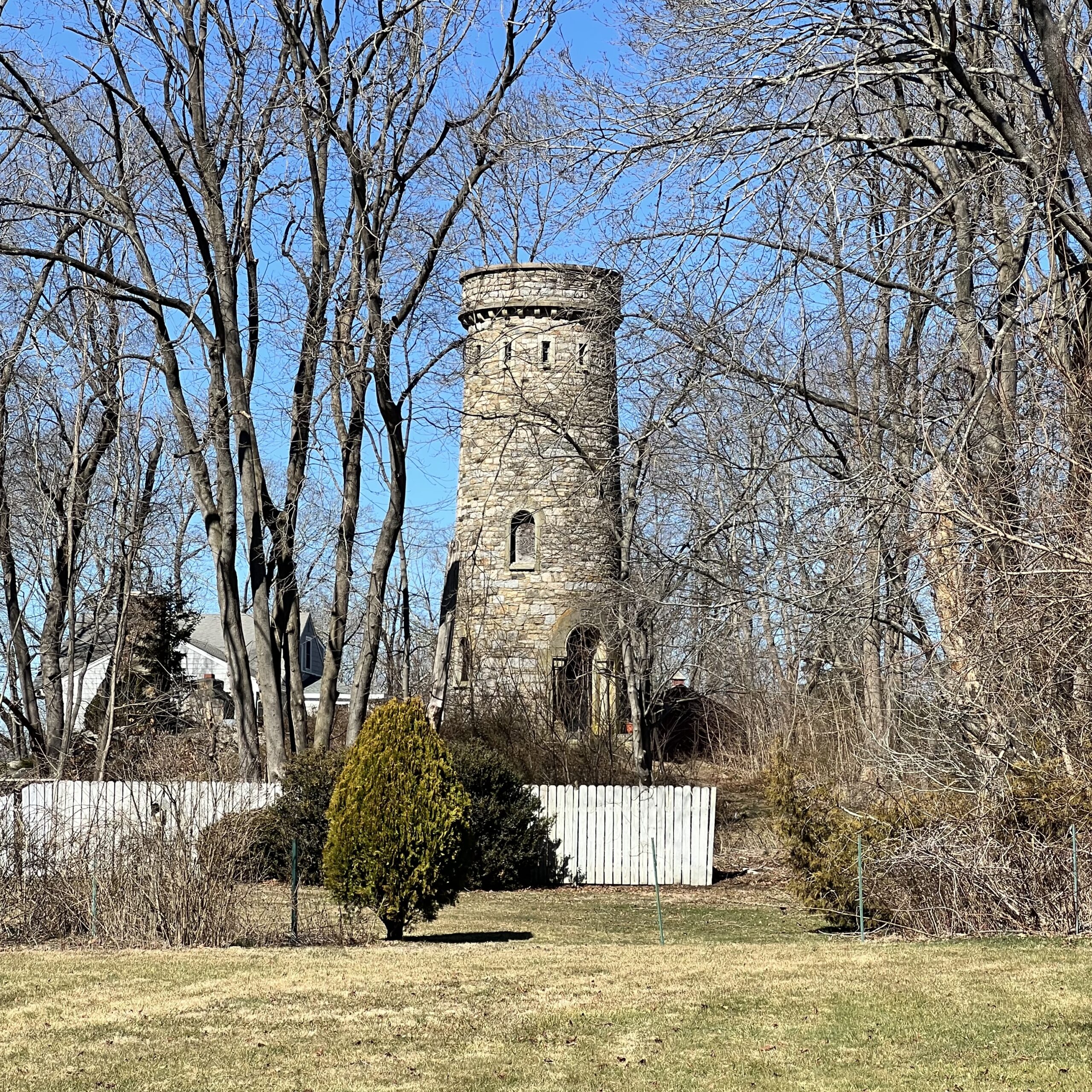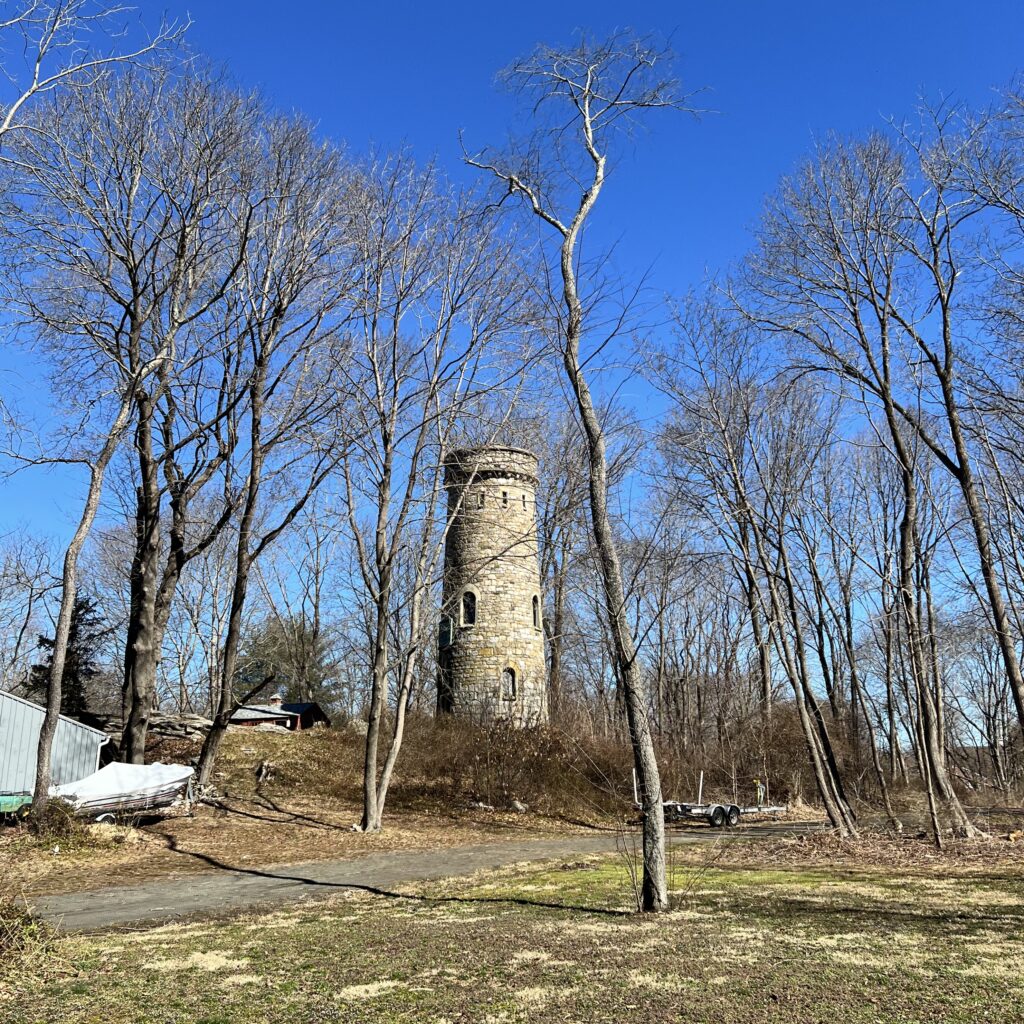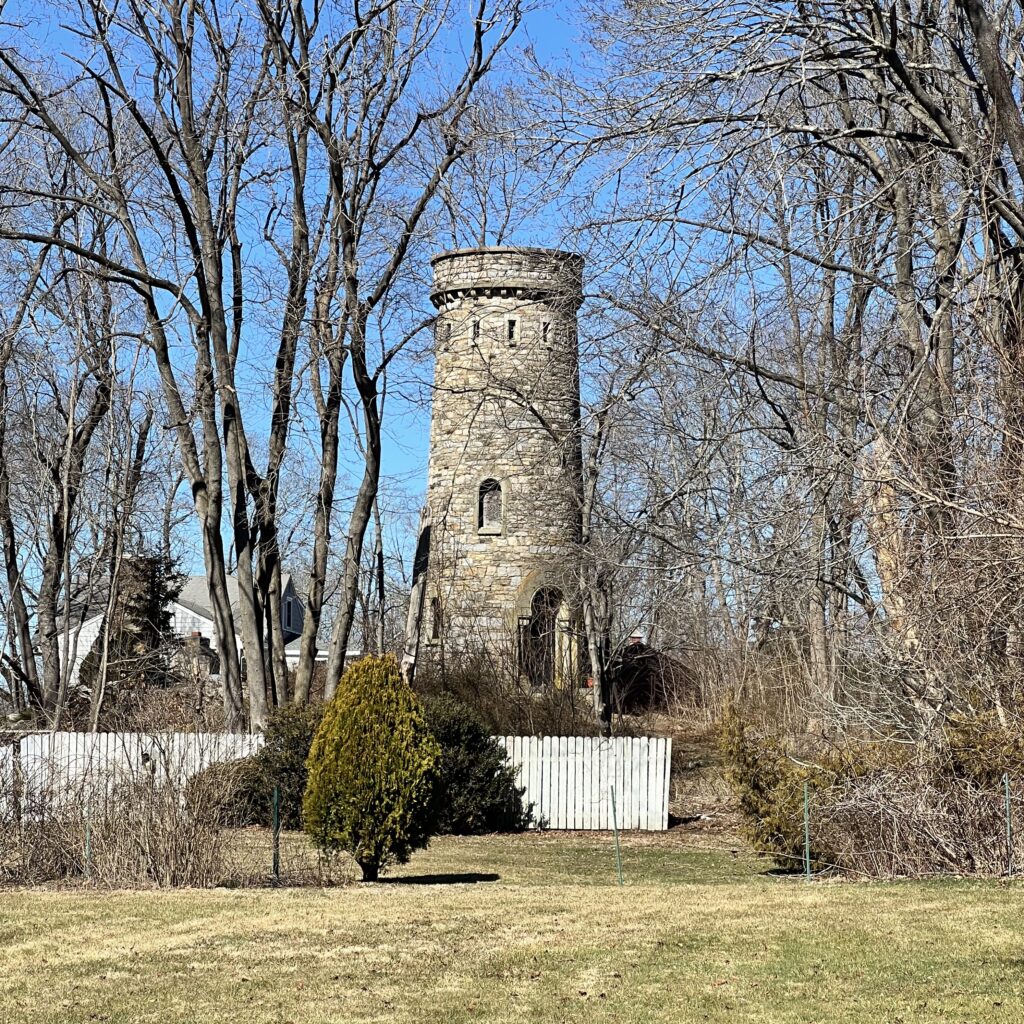



Cranbrook Tower, Guilford, Connecticut:
Guilford was founded in 1639 by Puritans who purchased land from Native Americans represented by a female chief, Shaumpishih. The coastal town was called Menuncatuck before becoming known as Guilford. Today, Guilford has a population of about 22,000 and many historic homes, but perhaps its most intriguing property is an old traprock tower at 1 Broad Street.
In 1804, Abel Chittenden built a house on land owned by his family since 1639. After Abel’s death, his widow sold the house Danforth Nettleton due to financial woes. Abel’s son, Simon Baldwin Chittenden, eventually bought the family property back after finding success in the dry goods industry. In 1869, he commissioned a stone edifice behind his house to serve as a wind mill and a water tower. The estate grounds were also decorated with a fountain, a deer park and rare birds like peacocks. Simon Chittenden named the extravagant property after his civil parish of Cranbrook in Kent, England.
The windmill was removed from the tower in 1927 after the town established a municipal water system. During World War II and in 1955 the tower was used as an aircraft observation post and warning station manned day and night by volunteers. Now closed and unused, the stone tower remains a mysterious monument to the history of the Chittenden family in Guilford.
View this post on Instagram
View on Instagram: https://www.instagram.com/p/C4IMrdauibu/




